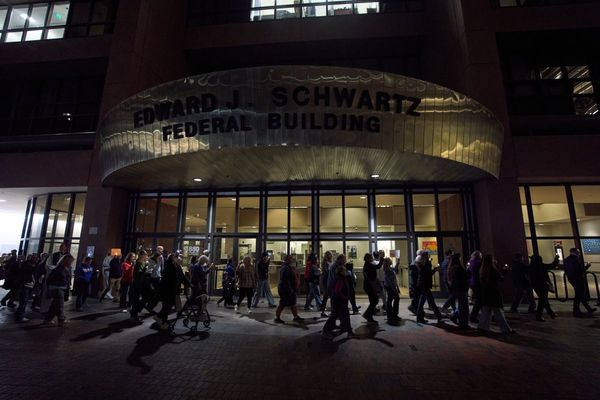
Thinking about sprucing up your backyard with that dreamy pergola or cozy fire pit? Think again—some backyard add-ons can land you in hot water with the neighbors or even the court. Doing your homework before you build not only saves you money but keeps the peace. This guide explores nine common additions that often spark neighbor disputes—and how to avoid drama by planning smartly. Learn what invites trouble—and how to do it right.
1. Hot Tubs & Jacuzzis
Many homeowners install hot tubs for relaxation, but these backyard add-ons often trigger complaints about noise, privacy, and zoning infringements. In one California case, a neighbor sued over pump noise and privacy invasion—despite a 6-ft wall—spending $2,000 to block installation. Local councils may require sound studies or permit hearings when objections arise. Even the absence of noise infractions, disruption, or perceived intrusion can spark a nuisance claim. Always check setback rules, sound limits, and chat with neighbors up front.
2. Outdoor Structures (Sheds, Studios)
Adding a backyard office or she-shed sounds great—until your neighbor claims it blocks sunlight or view. Outbuildings must meet development codes, including height limits and distance from boundaries, typically under 2.5 m eaves without a permit. If you breach that, expect permit denials and potential removal orders. Even permitted structures can spark complaints if considered a visual nuisance. Seek approvals and be transparent with neighbors early to avert conflicts.
3. Fences & Privacy Screens
Replacing or adding a tall fence often provokes neighbor pushback. A $200,000 lawsuit resulted from a fence dispute in Wisconsin, where an HOA enforced an old covenant forbidding fencing, and residents footed the bill. Regulations vary; some neighborhoods ban fences entirely. A surprise fence can feel hostile, or even endanger shared views or water flow. Always check covenants, local rules, and discuss plans to avoid drama and excess legal fees.
4. Fire Pits & Outdoor Fireplaces
Fire pits create atmosphere, but can cause smoke, soot, and safety issues that trigger neighbor anger. Code enforcement also monitors ember risk and burn permits. A buildup of complaints or nuisance claims can lead to forced removal and fines. Sharing your plan, using smokeless fuel, and selecting low-screened pits can reduce conflicts. Proactive measures keep ambiance—and the peace—without lawyering up.
5. Pools & Water Features
Swimming pools, fountains, and ponds may seem innocent garden upgrades—until neighbors cite noise, splash, or mosquitoes. Many jurisdictions deem these statutory nuisances if pumps leak noise or drains overflow. Safety fencing and maintenance are also regulated strictly. Be sure your design meets setback, drain, and sound ordinances—and talk to neighbors about pump placement and noise dampening.
6. Decks & Elevated Patios
Building a raised deck can obstruct neighbor sightlines and spark “view violation” claims. Even if it fits the code, emotions and HOA rules may differ. Some argue elevated patios compromise privacy or block natural light, enough for a nuisance complaint. A calm conversation and filtered screening can defuse tension. Always review height restrictions and consider design tweaks before construction.
7. Outdoor Kitchens & BBQ Islands
Outdoor cooking setups are great, but smoke drift, odors, and grease runoff can irritate neighbors. Complaints may land under nuisance regulations or kitchen venting laws. Fire risk also plays a factor in legal liability. Using gas grills, smoke-control features, and thoughtful placement keeps the peace. Preparedness now avoids fines or neighbor lawsuits later.
8. Outdoor Lighting & Spotlights
Well-placed lighting improves evening ambiance, but bright LEDs or floodlights can disturb neighbors and raise light-lit nuisance issues. Many places have ordinances against light trespass. A neighbor could sue if glare disrupts sleep or invades privacy. Install shields, timers, and use low-lumen bulbs to stay within acceptable brightness. Polite notification keeps relations glowing happily.
9. Large Planters & Raised Beds
Landscaping upgrades seem harmless, but large raised beds that alter drainage or block views can spark disputes. Overflowing soil, pooling water, or plants that climb over the fence can lead to water-flow conflicts. If neighbors feel their enjoyment is affected, they can file public or private nuisance claims. Choose permeable beds, maintain proper drainage, and trim plants regularly to keep harmony.
What You Can Do for Peace in Your Backyard
Before building any backyard add-on, do these simple steps: check your property codes, HOA rules, and setback requirements; measure noise, light, and privacy impacts; talk to your neighbors early; and add features like fences, sound buffers, or screens to reduce conflicts. Document conversations and permits—you’ll be in a strong position if trouble arises. Many disputes settle informally when you show consideration and transparency.
Backyard upgrades are about enhancing your enjoyment, but they can negatively affect neighbors in unexpected ways. Plans that consider local laws, design impacts, and neighbor feelings avoid surprises and lawsuits. When in doubt, put yourself in your neighbor’s shoes, double-check the regs, and talk casually before you commit. That way, your backyard add-ons remain fun, not fraught.
Have you ever added something to your backyard that sparked chatter—or worse—among neighbors? Share your story and wisdom below!
Read More
7 “Helpful” Things Your Neighbors Do That Could Get You Sued
Your Neighbors Are Sick Of You If You’re Doing These 8 Things
The post Neighbors Could Sue Over These 9 Popular Backyard Add-Ons appeared first on Clever Dude Personal Finance & Money.







